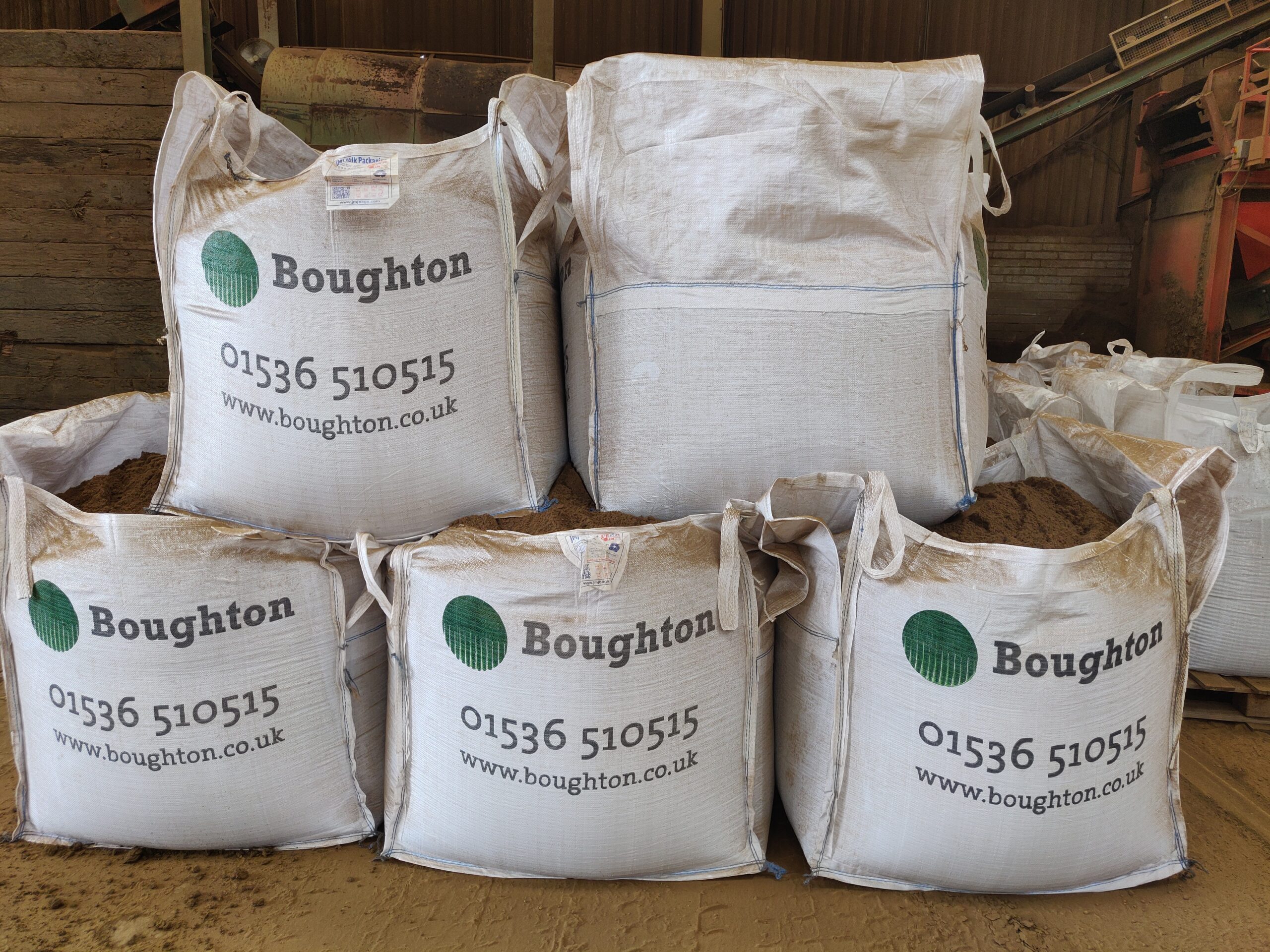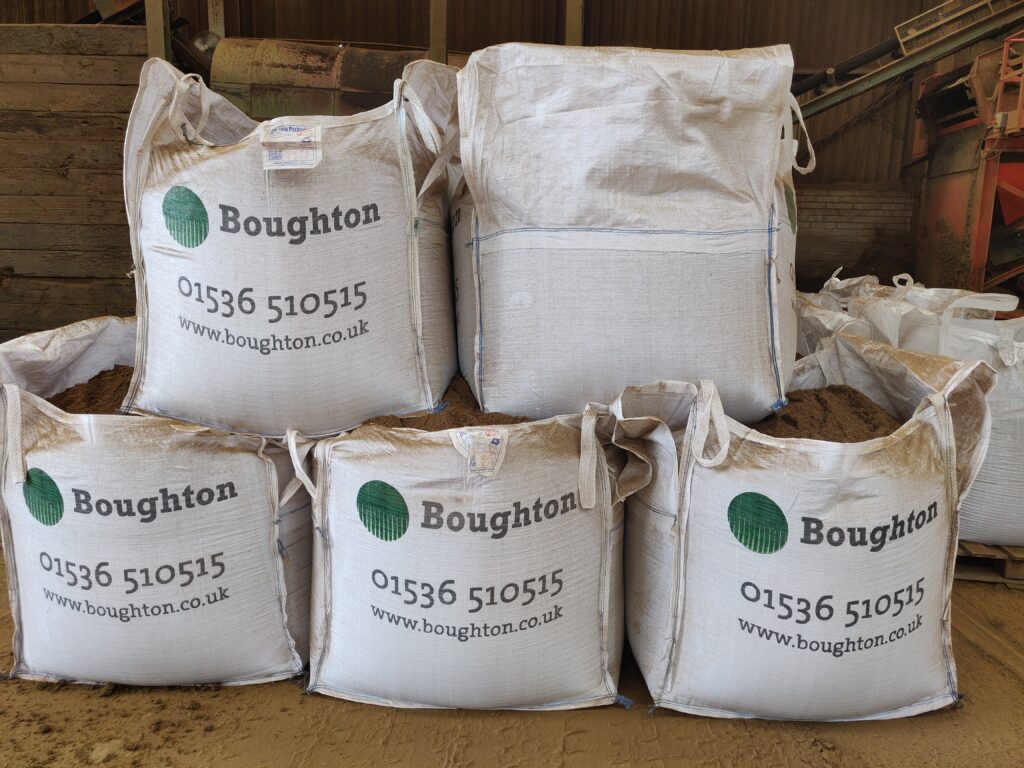 Landscaping products specialist, Boughton says more education is needed around the benefits of natural topsoil for landscaping projects. Making more sustainable choices around the soil you use on site can have a huge impact on the quality of the finish you deliver to clients and the protection of vital natural resources.
Landscaping products specialist, Boughton says more education is needed around the benefits of natural topsoil for landscaping projects. Making more sustainable choices around the soil you use on site can have a huge impact on the quality of the finish you deliver to clients and the protection of vital natural resources.
The growth in popularity of soil substitutes over the years has tended to drown out the voice of natural soil, meaning that many in the industry aren’t as well informed as they could be about the advantages using a natural single-source topsoil can have on a project. Equally, in many cases, contractors and landscapers are specifying according to BS standards, assuming this is a mark of quality, rather than simply being the base standard the industry must conform to.
Boughton Business Development Manager, Jason Lock believes more awareness is needed. He says: “In many instances, specifiers are completely unaware that soil substitutes they are using may not be a topsoil. BS3882:2015 is a mark of conformance and is not a standard of quality, which means, if you just specify BS3882:2015, you may not realise that you are most likely to get a soil substitute and not a topsoil.”
What are the benefits of ‘as dug’ topsoil and what does that mean for my project?
The benefits of using a natural soil are significant. These soils have good body and great moisture retention qualities – ideal for modern landscaping projects, given predictions of water shortages in the future.
Boughton soils also have a low pH, high organic content and boast both existing and developing organism biomass, which is a huge plus for planting schemes, as we know that microbial activity is crucial to the development and growth of flora within a soil.
Some natural topsoils have been establishing themselves for thousands of years, allowing their nutrient balance time to level out and cycle on a natural rhythm, meaning they can provide host plants with accessible nutrients quickly, once installed.
It’s also worth noting that natural soil is not more expensive than a soil substitute so for any designers keeping a close eye on the budget, you’re not necessarily making savings by opting for an alternative product.
Where is natural soil sourced and why is that important?
Some specifiers may shy away from natural soils because they feel reassured by a consistency in the make-up of soil substitutes. However, the key to success is transparent sourcing and many in the industry may not realise that any lack of consistency in natural soils can be easily mitigated by using single-source ‘as dug’ topsoils.
Jason explains: “I would agree that natural soils can vary but, given where our soils are largely sourced, that variation is restricted.”
Boughton typically sources its soil from pre-construction and construction sites from the counties surrounding its base in Northamptonshire. These topsoils – all of which are completely natural, organic and peat free – are closely inspected and screened before use. Boughton never uses recycled soils because they cannot be relied on to be of a consistent quality.
Jason continues: “We have very good working relationships with developers and civils companies where we can gain our soils. These are inspected prior to acceptance to ensure they meet our standard. Our soils are single source, not blended from multiple sources, so any of our soils have complete traceability.”
The re-purposing of this natural, biodiverse topsoil not only provides huge benefits for the landscaping projects it is utilised in but also means this valuable natural resource isn’t wasted or lost. If not taken by Boughton, soils could end up being used inappropriately – for example, pushed up to form bunds around the site perimeter – or can even end up sent to landfill.
The right soil for the job
Of course, there are occasions when a man-made substrate might be better suited to an application – such as a green roof or podium – in which case, there are high quality options that cater to this specific usage and can still achieve outstanding results. Again, it all comes down to greater awareness of the solutions available to ensure you are specifying the right soil for the space.
“Topsoils are often specified for green roofs,” Jason explains. “However, there is no BS for green roof products, and it is also worth noting that they are not topsoils, they are substrates.”
A leading supplier of landscaping products, Boughton also has an extensive range of substrates suitable for green roofs. These substrates are specifically engineered for a variety of green roof uses and feature low bulk density, the ability to retain sufficient water for plant growth but low nutrient content to prevent excessive growth, the ability to be free draining to prevent saturation, and sufficient porosity to provide good aeration.
Meanwhile, a range of natural topsoils are ideal for large-scale ground-level planting projects, amenity grasslands, and landscape renovation works, with the added benefit that they are also suitable for areas where permanent irrigation has not been specified, thanks to excellent moisture and nutrient retention capabilities.
Jason comments: “There are instances where it may be a requirement to have a very specific soil type or structure for a project; and that is where a soil substitute works well. However, for the vast majority of planting schemes within the UK, a natural soil would be perfectly suitable and/or better for the project.”
Making a responsible choice
As an established supplier to the amenity, construction and landscape sector for more than 35 years, Boughton has a passion for natural and sustainable products that deliver superior performance and environmental excellence. The company is leading the way in ‘as dug’ soils and boasts premium natural soils, such as BL 1 – natural topsoil, BLS 2 – natural, single-sourced screened topsoil, BLS 20 – Natural Topsoil, and BLS Plus within its impressive portfolio.
Boughton’s ‘as dug’ certified topsoil can be supplied with an independent soil analysis, having been tested by independent MCERTS laboratories. The supply chain for all of Boughton’s soils is fully transparent, with complete traceability back to their original source; an important element in sustainable construction.
Business Development Manager, Jason Lock concludes: “Using natural topsoil is a considered decision and is a more responsible choice, as it means re-using one of our most precious commodities. Vegetation has been growing in natural soil for millions of years; I cannot, therefore, see any reason why a natural soil wouldn’t be your first choice.”
To enquire about your next project, contact Boughton by calling (01536) 510515 or email sales@boughton.co.uk.
ENDS
Words: 1,078
Notes to Editors
Boughton Ltd – An acknowledged specialist and market-leading supplier of topsoil, growing media, specialist loam blends and landscaping products, with over 30 years of successful delivery to the industry, U.K. wide.

